Best grooveboxes 2025: All-in-one groove machines that bring the fun back to music production
With instant tunes, inspiring ideas and not a computer in sight, these are the best machines for getting your groove on
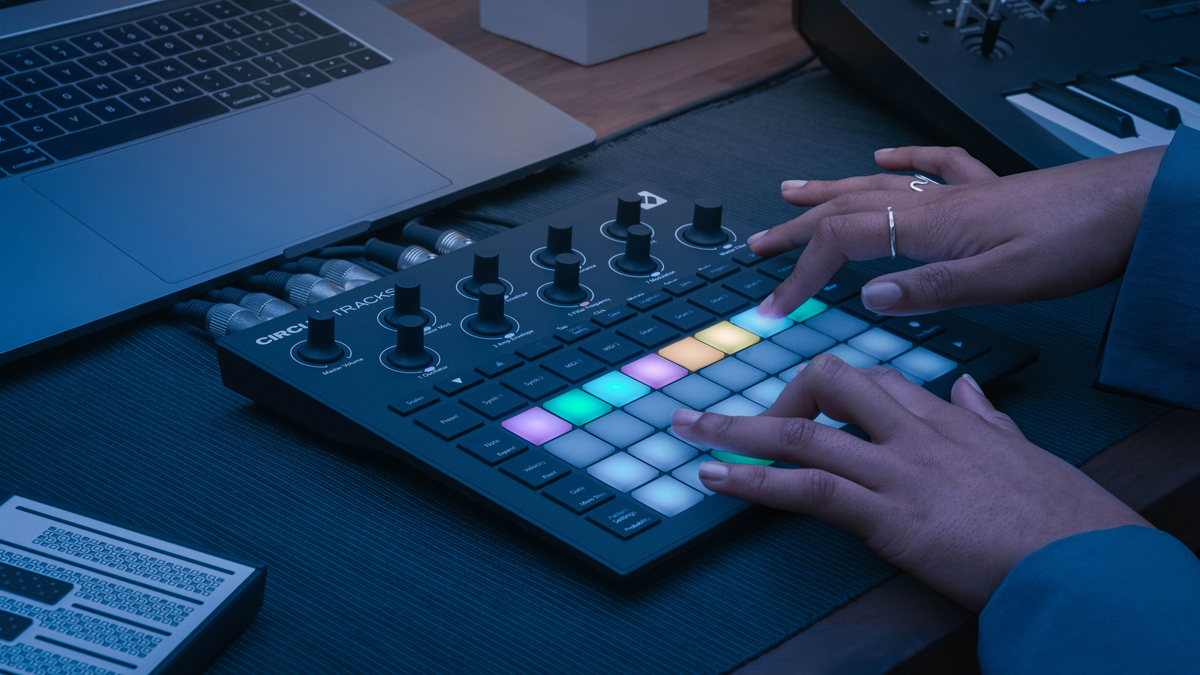
Grooveboxes are the best and fastest ways to get musical ideas down, or inspire completely new tunes. They’re easy to use, cost effective, you don’t need computers to use them and you can often take them anywhere. Here we’ve rounded up the best grooveboxes available today for the fastest and most fun instant melody and beat making.
The definition of a groovebox is certainly not set in stone. They allow you to make beats like drum machines, but tend to add bass, lead lines or other melodic action. With some you can create entire songs, although we have largely steered clear of the all-in-one hardware DAW solutions - they tend to cost four figures and get their own buyer’s guide!
What we have here are machines that groove for under a grand, that work without a Mac or PC and give you instant results. They’re fun, often - but not always - aimed at dance music producers; some come with effects, others add real-time performance options.
If you want extra buyer’s advice and to learn more about grooveboxes and the definitions we have come up with for this list, skip to the end of this feature where we have more information.
Best grooveboxes: MusicRadar’s Choice
As you might expect, the more you pay for a groovebox, the more capable it is of creating a complete piece of music. And in some cases, the more you pay, the more complex the features, so the less instant fun you will have!
With that in mind, and ‘having fun’ being one of our groovebox rules, you don’t get much more instant than Roland’s AIRA Compact T-8 and Korg’s Volca Sample. They are both instant music creators, completely portable and are silly money for what you get.
At the other end of the scale, the Akai MPC One and Polyend Tracker will both have you making (almost) complete tunes. While Tracker offers a quite leftfield approach, it delivers substantial power for minimal outlay. MPC One, on the other hand, really does deliver full tracks in a more conventional manner, but at a higher price point.
However, the machines that deliver more of a groovebox ethos than any other are Elektron’s Syntakt and Novation’s Circuit Tracks. Elektron’s machine has a powerful engine that might take some getting used to, while Circuit gives you instant results and has a surprising level of depth beneath the surface.
Best grooveboxes: Product guide
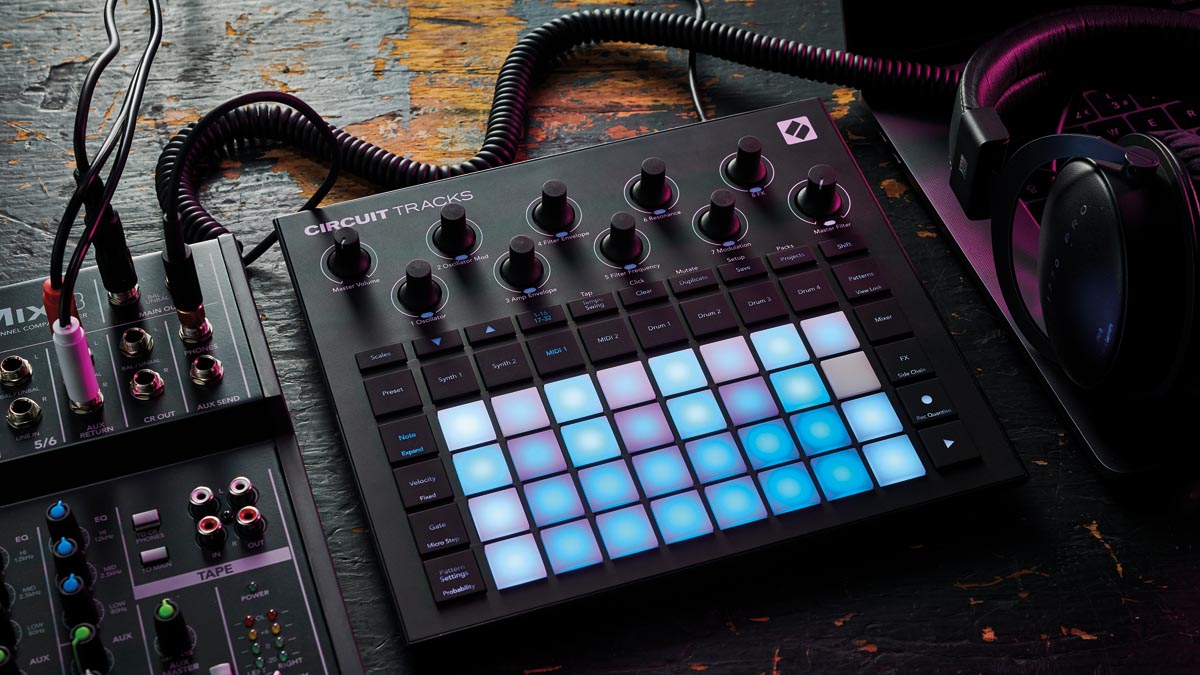
Specifications
Reasons to buy
Reasons to avoid
Circuit Tracks is a straight sequel to the original Circuit groovebox. With more functionality it looks like an even better value proposition than its predecessor. The synths and sampling capabilities are broadly similar to those on the original, with the most significant additions being to the hardware itself.
Tracks features a built-in rechargeable battery and draws power using its USB input. Battery life is around four hours, which isn’t massive, but USB power certainly means more options for powering the unit on the go.
Like the original, the highlight of Circuit Tracks is the slick, approachable and surprisingly versatile sequencing workflow. You get two synth tracks and four drum tracks which as well as triggering internal sounds also output MIDI, so you could happily drive multiple polyphonic instruments from Circuit Tracks in a live setup. The simple pattern chaining system from the original Circuit is carried across here, allowing users to connect up to eight 32-step patterns.
Circuit Tracks has plenty to offer music makers at all levels. Whether as a convenient and portable tool to sequence a live setup, a portable synth and drum sketchpad or an all-round studio workhorse, Circuit Tracks has a lot going for it.
Read the full Novation Circuit Tracks review
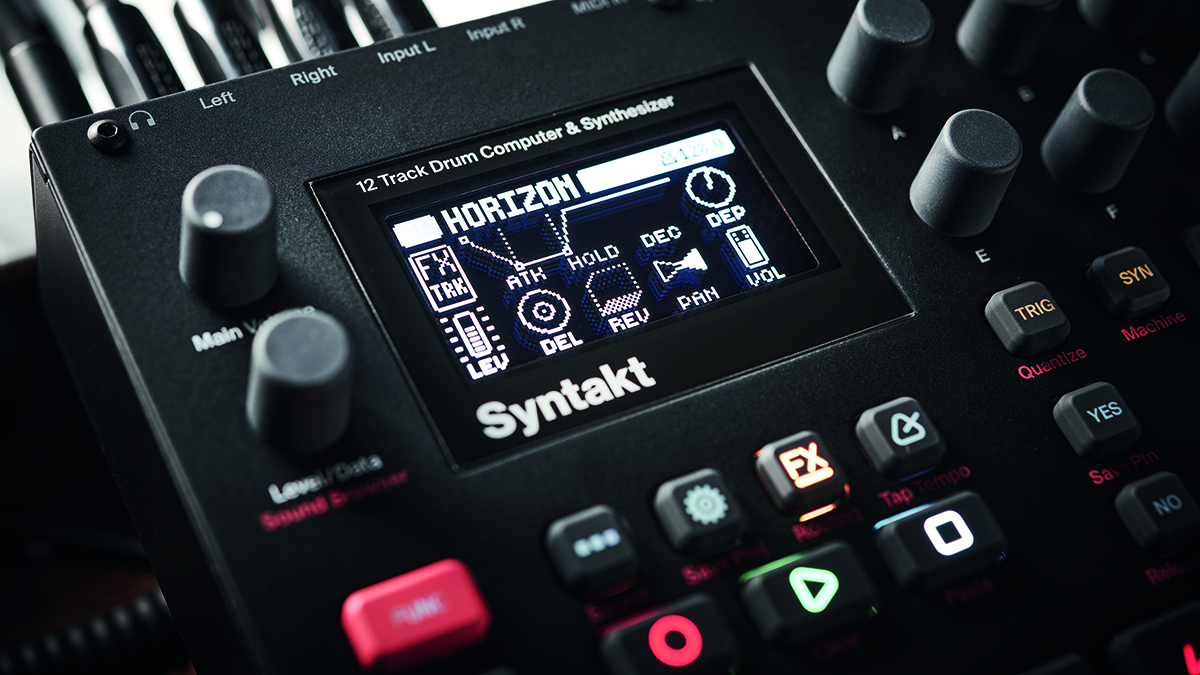
Specifications
Reasons to buy
Reasons to avoid
Syntakt is a hybrid analogue and digital groovebox with four analogue and eight digital tracks which can be used for beats, lead and bass sounds. In all cases, each track can be assigned one of several ‘machines’, which are effectively base presets specialising in a certain sound type or synthesis style.
Like other Elektron gear, the workflow can take some getting used to and has some eccentricities. For example ‘drum tracks’ also contain tonal synths for melodies so sometimes logic seemingly takes a back seat.
However once you get your head around the ‘machine’ concept there’s a lot to love here. On the drum side of things, the balance of analogue and FM covers everything from classic x0x-alike tones to modern metallic percs and gritty, noisy hits. There’s also plenty of fun to be had by ditching the percussion and using only the tonal generators to create purely melodic patterns.
The sequencing workflow is characteristically deep and creative. As with Digitone and Digitakt, the 64-step sequencer boasts full per-step parameter automation, probability and conditional triggers, and plenty of flexibility over playback speed, individual track lengths and step micro-timings.
Syntakt is a bit like a greatest hits for Elektron, with many of the features that made its siblings so popular. Its biggest drawback is that it has just two analogue outputs, but minor drawbacks aside, Syntakt may just be the best groovebox you’ll find for under $/£1,000 right now.
Read the full Elektron Syntakt review
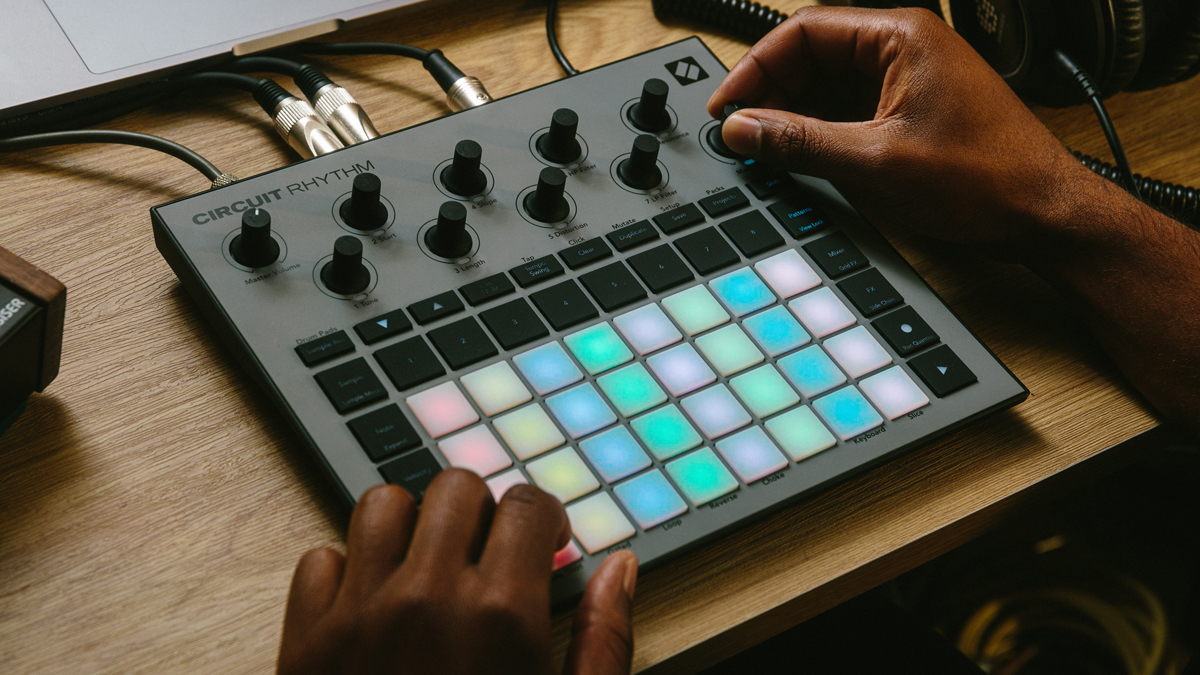
Specifications
Reasons to buy
Reasons to avoid
The original Novation Circuit packs in two polysynths, a four-track sample sequencer and multiple channels of external sequencing. Circuit Rhythm ditches the original’s multi-functional ethos in favour of a focus purely on sampled grooves.
There are 8x4 banks of pads that handle sequencing, flanked by navigational and transport buttons, with a bank of eight macro parameter rotaries along the top.
Novation has considerably upped the capabilities here, making the workflow more in line with what you could call a genuine ‘sampler’ rather than a rudimentary sample player. You sample into Circuit Rhythm, either by recording through the rear inputs or by directly resampling the sound engine.
By default, the sample slots come filled with sounds from Novation’s factory sound pack, which offers a broad if, perhaps understandably, fairly generic array of percussion sounds, FX, melodic loops, and the like. It’s a simple job to clear any sample you’re not enamoured with though, freeing up the slot for a new recording.
The process of recording and editing samples is generally well implemented although it does feel somewhat hindered by the lack of a screen. However, Circuit Rhythm’s overall workflow maintains much of what makes its sibling instruments so fun. Samples can be sequenced in several ways, and there are now eight sample parameters to adjust. As with previous Circuits, it’s possible to record automation of these into patterns.
Circuit Rhythm is a fun and creatively powerful and, at this price, slots into a sensible spot in the market. It is a little harder to love than its Tracks counterpart, but it’s well-made and very powerful for the price, nonetheless.
Read the full Novation Circuit Rhythm review
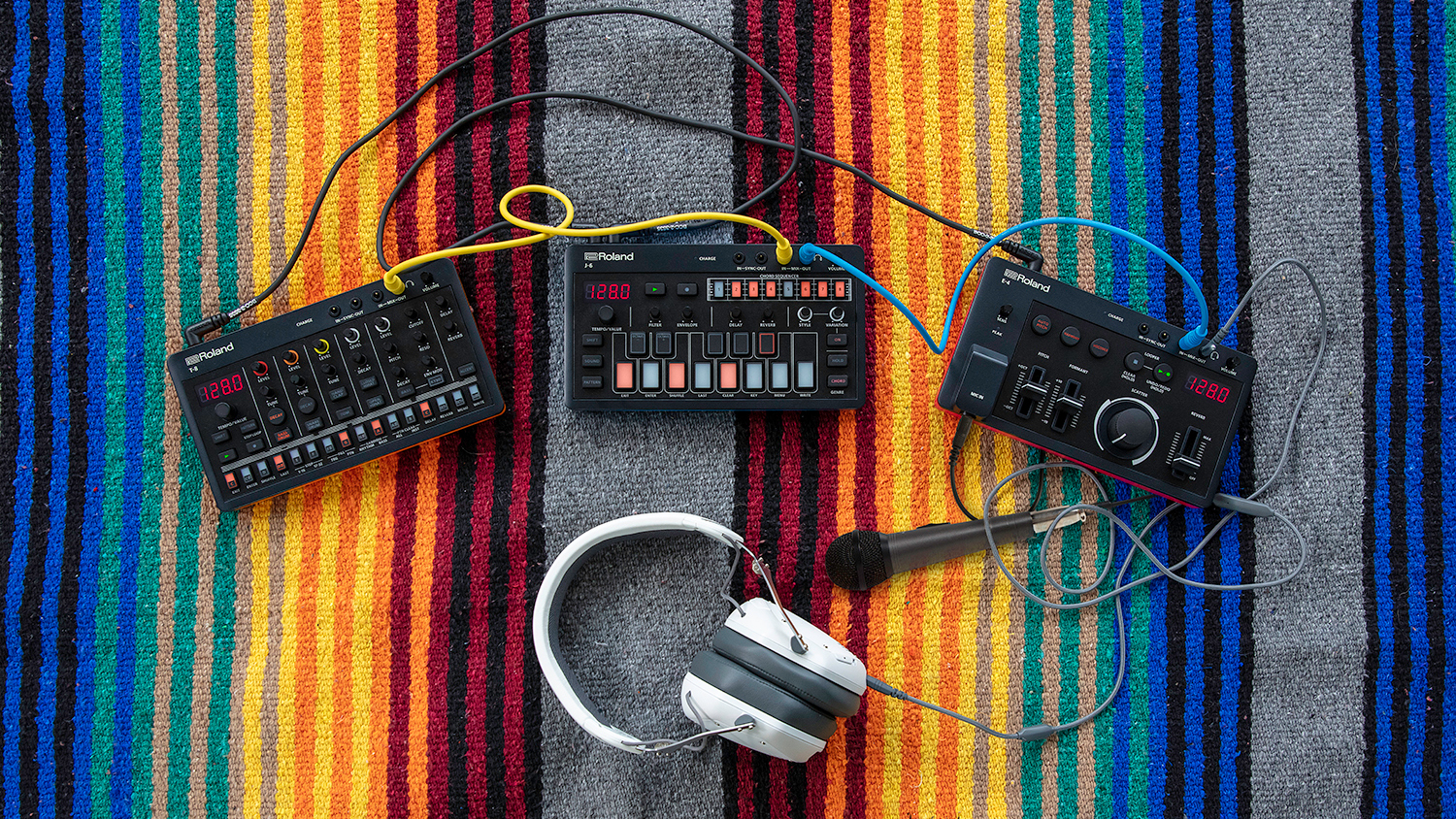
Specifications
Reasons to buy
Reasons to avoid
Although the T-8 is referred to by Roland as a ‘Beat Machine’, it has another important feature up its sleeve: a bass section modelled on the fat and squelchy TB-303. For the drums, rather than simulating sounds of one particular drum machine, Roland has chosen to mix it up a bit with a hybrid approach - muddied perhaps by the overlaps or similarities in sound and circuitry between some of Roland’s earlier analogue drum machines. So, the Bass Drum and Snare are taken from the TR-909, the Clap has an 808/909 flavour, the Toms sit in 606/808 territory and the Hats are derived from TR-606.
As with the drums, bass sequences can be created using an X0X-style step-time programming system or in real-time employing the buttons as keys. In the same way that the drum section supports additional features such as sub-steps, flams and variable velocity levels, the bass sequencer also allows you to add accents and slides.
There’s a lot to like about the T-8 as the drum and bass engines make for a fun, usable combination. Roland has also seen fit to add interesting extras such as variable probability for each step in the drum sequencer, and ability to generate randomised rhythm and bass patterns.
T8 Beat Machine is hampered by the less than ideal menu system and limited display, but is still great fun and a genuinely useful combo of drums and bass.
Read the full Roland AIRA Compact T-8
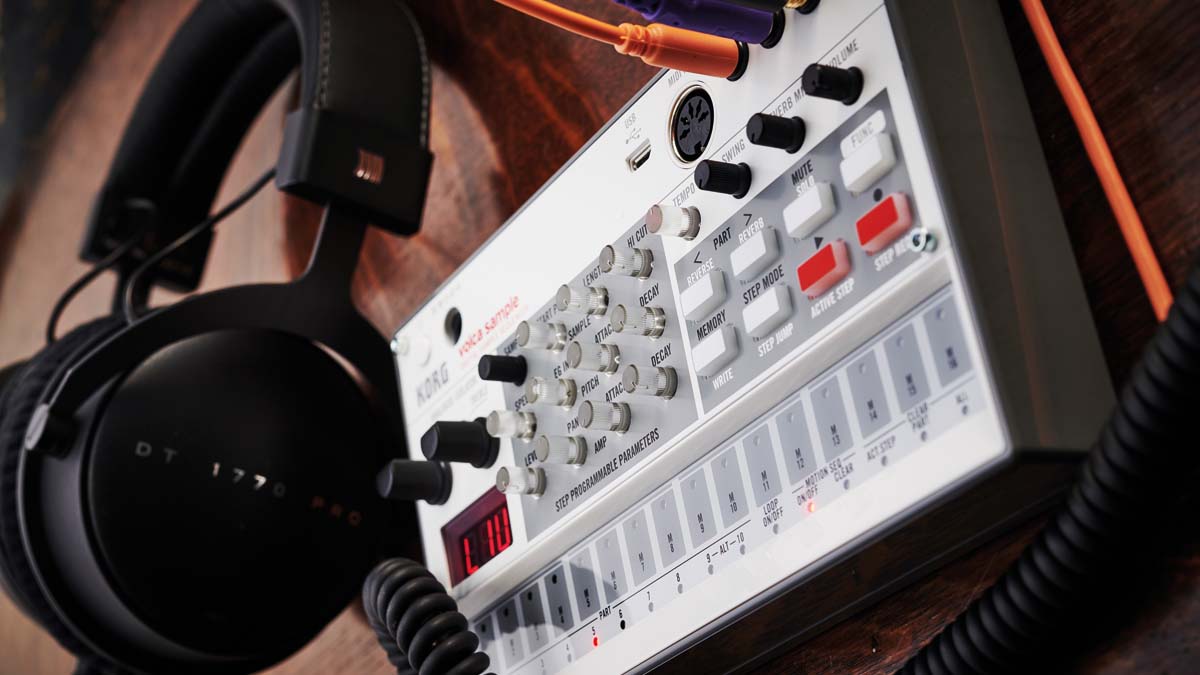
5. Korg Volca Sample
Specifications
Reasons to buy
Reasons to avoid
Korg’s Volca range has been tremendously successful and each one certainly grooves, but tends to focus on one thing: beats, bass, leads and so on. Sample is included here because its samples can be anything, allowing production of complete songs.
Version 2 is a subtle refinement of the original Sample, the best-selling Volca in Korg’s range. The most significant addition is a micro USB port on the front panel, which allows users to hook the Sample up to a computer for direct sample import.
The onboard sample memory has been doubled too, which is a nice touch, and Sample 2 comes with an upgraded library of sounds to take advantage of the extra space.
The sequencer adds pattern chaining - a welcome bonus if you want on-the-go creativity - and off-the-grid steps, which are handy for creating more unusual grooves and swung rhythms.
The extra memory, convenience and sequencing scope combine to make this a significant step up. Given the still very reasonable price point, this Volca is more tempting than ever.
Read the full Korg Volca Sample review

6. Akai MPC One
Our expert review:
Specifications
Reasons to buy
Reasons to avoid
The past decade has seen a few twists and turns for Akai’s iconic MPC line. In 2012, the range morphed from its traditional ‘all-in-one-box’ format to become a hybrid controller-software system more akin to NI Maschine. In 2017, however, the MPC returned to its standalone roots with the impressive MPC Live and its behemoth sibling the MPC X.
And in 2020, the One joined the range as a more compact and wallet-friendly counterpart to the MPC Live. Much of what impressed us about the MPC Live remains intact here. As you’d expect with any MPC, the main focal point of the control panel is a grid of backlit, velocity-sensitive performance pads.
As with the Live and X, these are joined by a high-def 7” touchscreen - here placed above, rather than next to the pads - along with four touch-sensitive rotaries for quick, hands-on manipulation of parameters.
You get 2GB of supplied content, plus three internal soft synths, a drum synth and vintage keyboard for extra sonic creativity. Add this to the powerful sampling and editing features and this is a powerful standalone workstation that takes the groovebox up to DAW level status.
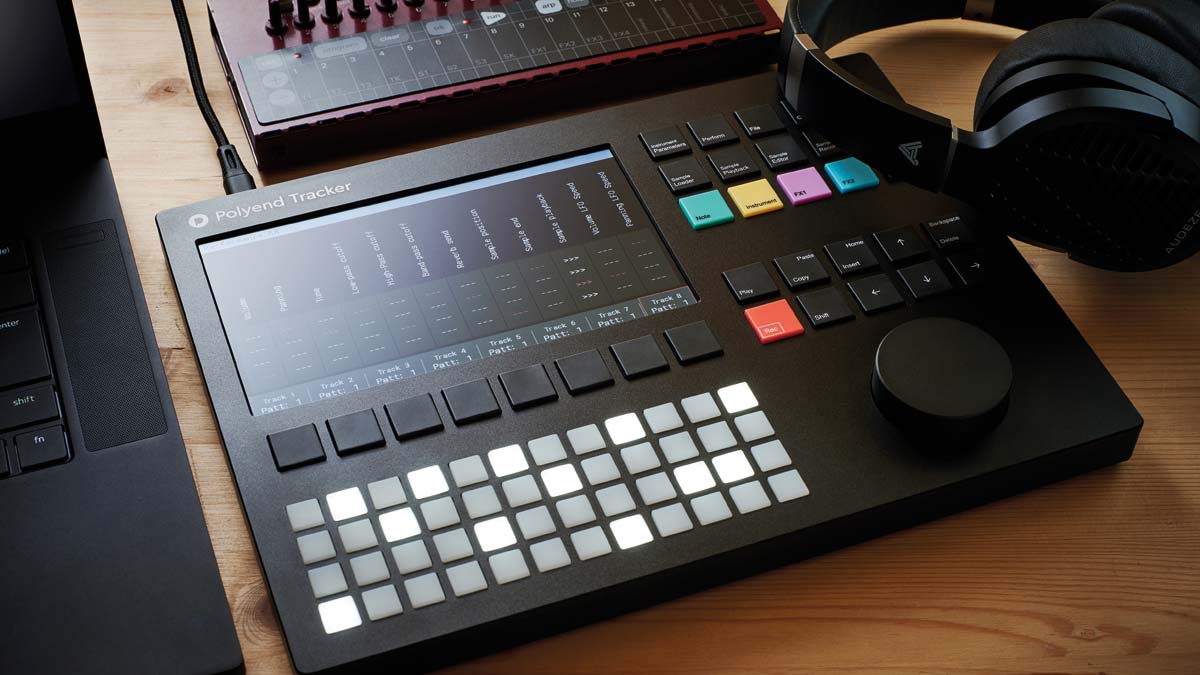
Specifications
Reasons to buy
Reasons to avoid
Polish brand Polyend has taken many of the general principles shared by tracker software applications and placed them into a hardware instrument. On a workflow front, that includes the vertical sequencer and emphasis on pattern sequencing, but it’s also coupled with retro-influenced hardware that uses a pad-based ‘keyboard’.
Samples are either recorded or loaded to the instrument’s memory from an SD card slot, which are then used to create up to 48 ‘instruments’. You can use the samples as one-shot or looped sampling or use a sample slicing mode for loops, to cut up or detect and adjust transients.
The bulk of the creative work takes place within Tracker’s Pattern view, which is the element most reminiscent of software trackers of old. Patterns are arranged across eight tracks laid out from left to right, with steps running down the screen vertically. Every step can contain four kinds of info - note, instrument, FX 1 and FX 2, the latter two for playback conditions (reverse, probability etc).
The sequencer is a fun and creative tool and there’s also a Perform mode for live effect and arrangements tweaks.
Altogether, Tracker is a very capable machine with deep, interesting tools, although it is likely an acquired taste. But it is also a sleek, powerful and fun sampler that, given its sub-$/£500 price, has really come to win us over.
Read the full Polyend Tracker review
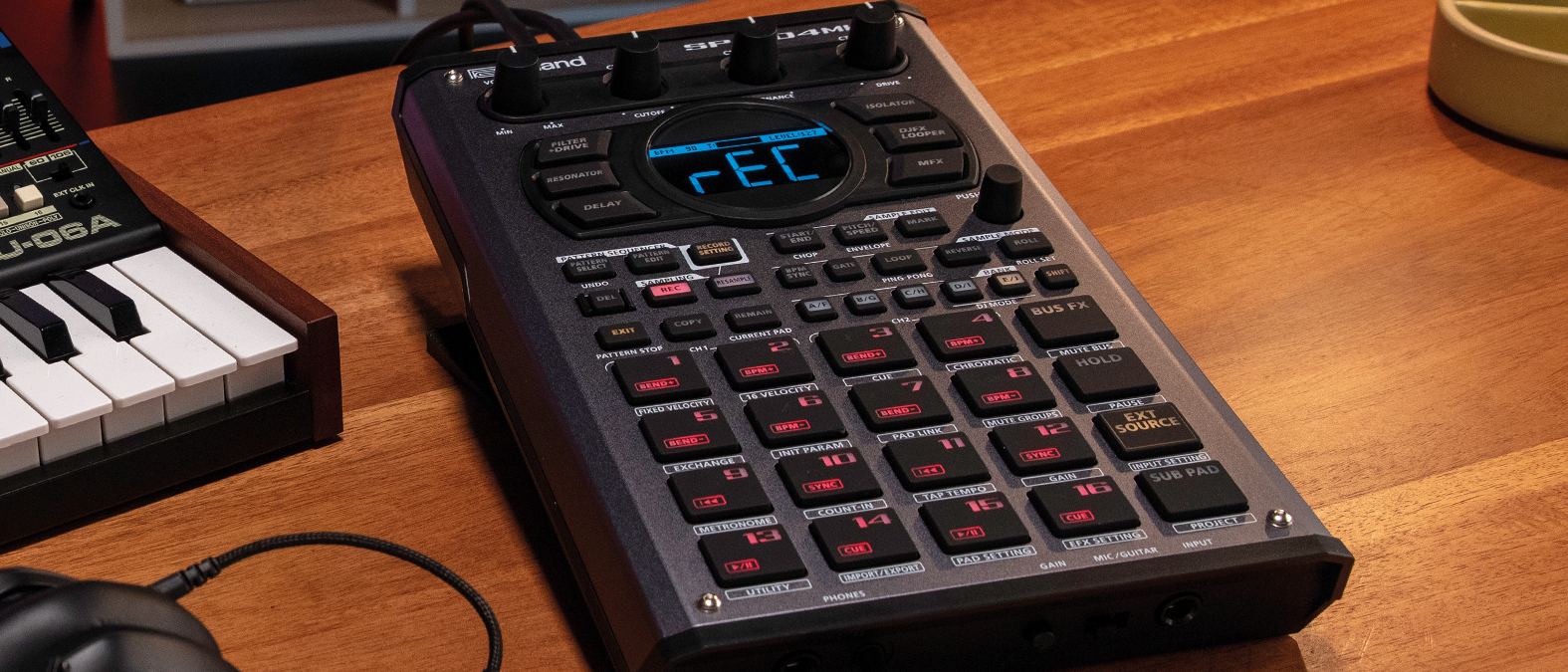
Specifications
Reasons to buy
Reasons to avoid
Previous versions of the 404 have been instrumental in the LA beat scene, where the combination of affordability and ease-of-use made the machine a favourite of many, both on stage and in the studio. However, while it might be beat focussed, its sampling capabilities mean it can bring any grooves and sounds to the party.
The MKII version has 32 voice polyphony, 160 samples per project, and 16 projects in all, which means a greatly expanded unit. Most important is the addition of a new OLED screen, which replaces the old LED screen which simply had a three number reference.
One of the most interesting additions to the new mk2 is what Roland has dubbed Skip Back mode. This means that the SP-404 mk2 is always recording audio in 25-second chunks. Never will you struggle to reproduce that sloppily played pattern you half-heartedly came up with.
Another new feature on the SP-404 mk2 that was inspired by the 404 community at large is a completely new DJ mode, which lets you play two different tracks/samples at once and even includes sync functionality.
Overall Roland has given the 404 an upgrade without changing its core workflow, which is dependent on being able to do almost everything you need to without looking at the screen or menu diving. Given the huge access to samples and sounds, the plethora of effects, and the new modes, a lot of beat makers are going to find the SP-404 mk2 at the centre of their DAW-less setups.
Read the full Roland SP-404 MKII review
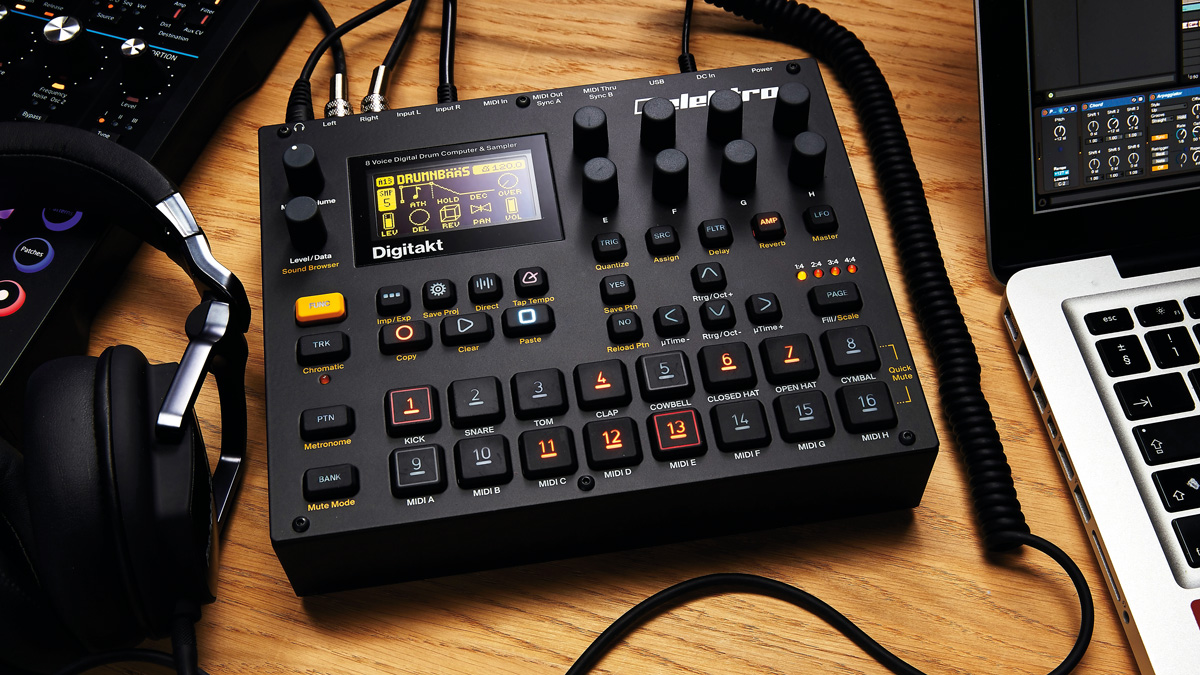
Specifications
Reasons to buy
Reasons to avoid
Digitakt is a sampling drum machine and MIDI sequencer with a purely digital architecture. It features 16 channels divided into eight audio - ie, sampling - channels and eight MIDI channels. Samples themselves can either be loaded via the internal memory or sampled from Digitakt’s audio inputs. The process of sampling is fast, fluid, and can be done without the need to pause the sequencer.
While ‘digital’ is often, unfairly, seen as synonymous with cheaper or less ‘full’ sounds, there’s certainly plenty of heft to Digitakt’s sound engine. The bit reduction and overdrive are particularly good at adding extra body and grit to sounds, and the sample manipulation and looping tools mean Digitakt can take things into esoteric territory well beyond simple one-shot sampling.
As with previous Elektron grooveboxes, the depth of the sequencer is the real trump card of Digitakt. Almost every parameter can be automated and the sequencer allows for pattern length to be set for each track, too, making it easy to create complex polyrhythms.
You will expect to spend a good few hours reading the manual before you can get the most out of it, but there’s a lot to like about Digitakt. It might look like a humble sampler, but with great sequencing and a decent crop of connectivity, we can see this becoming the centrepiece of plenty of studio and live rigs. Not a box to underestimate!
Read the full Elektron Digitakt review
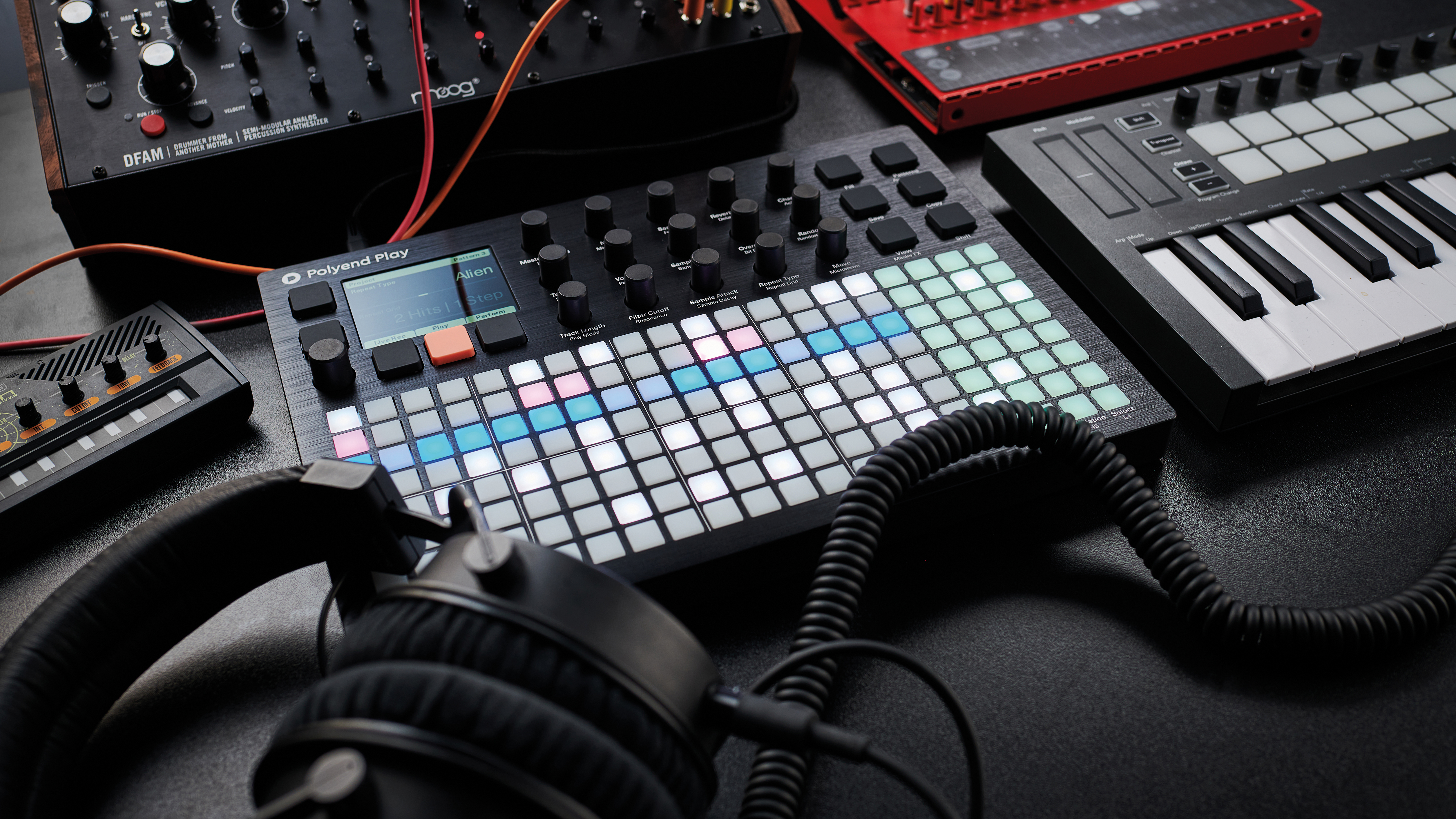
10. Polyend Play
Specifications
Reasons to buy
Reasons to avoid
Polyend’s Play is a sample-based groovebox and MIDI sequencer. It features no sampling capabilities itself from an external source but comes with 3000 samples.
The main action happens on the 8 x 20 grid of small, soft pads and is the main sequencer interface. The left-hand 16 columns control the step sequencer, while the final four are function pads. Each step can be assigned its own individual sample and parameter settings. Any new step added to the sequencer, no matter the track, will always apply the most recently selected sample choice and settings no matter what else is around it. If this sounds a little confusing, it doesn’t take long to get used to.
Play also features an additional and largely independent sequencer layered over the sample sequencer, including a handy chord mode and CC outputting from the rotaries. This means it’s possible to create multi-track external patterns at the same time as sequencing the internal audio engine. Alongside its step sequencing workflow, Play can also be played and sequenced live, including the ability to live record rotary movements into each sequence.
With its slightly unusual workflow, Play will likely click more for some users than others. And while it is outgunned by rivals in some of its sample capabilities, the unique, slick and inspiring workflow shines through above all else.
Read the full Polyend Play review
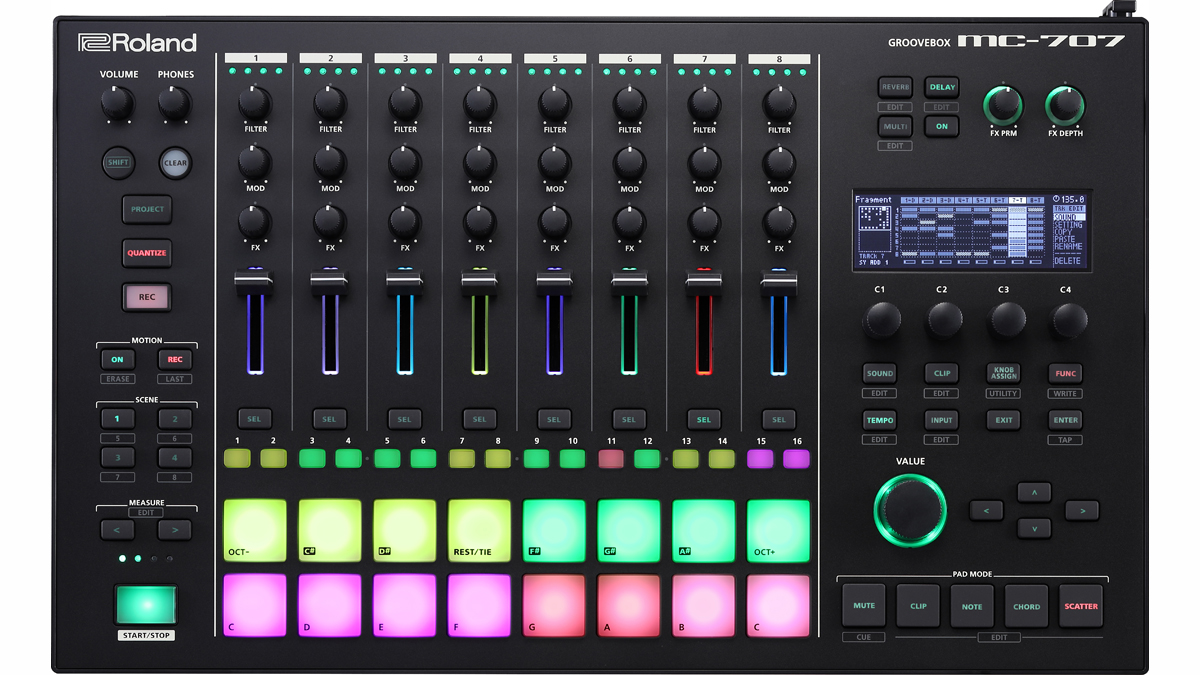
Specifications
Reasons to buy
Reasons to avoid
Roland was one of the major groovebox players back in the day, but the MC-707 was the first release since 2007, and it’s quite a comeback. It offers eight tracks, controlled and edited via its central bank of channel strips. Each track can be assigned either a Tone (polyphonic instrument), Drum (multi-part drum kit) or Looper (audio recorder). Recording and sequencing of these is handled by the pads and sequencer buttons, to create Clips, which are recorded, arranged and played using a grid system like Ableton Live’s Clip View.
The MC-707 is packed with sounds from Roland’s past and both its Drum and Tone generators also make use of Roland’s ZEN-Core engine, using a mixture of PCM samples and virtual analogue. There are more than 3,000 Tone presets and 80 preset Drum kits, each made up of 16 individual drum sounds. The arrangement workflow is neat too. Each track can contain up to 16 clips that can then be triggered either individually or as groups.
In all then, the MC-707 is a nicely designed tool, and a welcome return to this corner of the market for Roland. Workflow-wise, there are some niggles; the lack of one shot sampling, mainly, and there’s also a lot of menu diving. However, MC-707 is powerful and we can see it becoming a creative hub for a lot of producers.
Read the full Roland MC-707 review
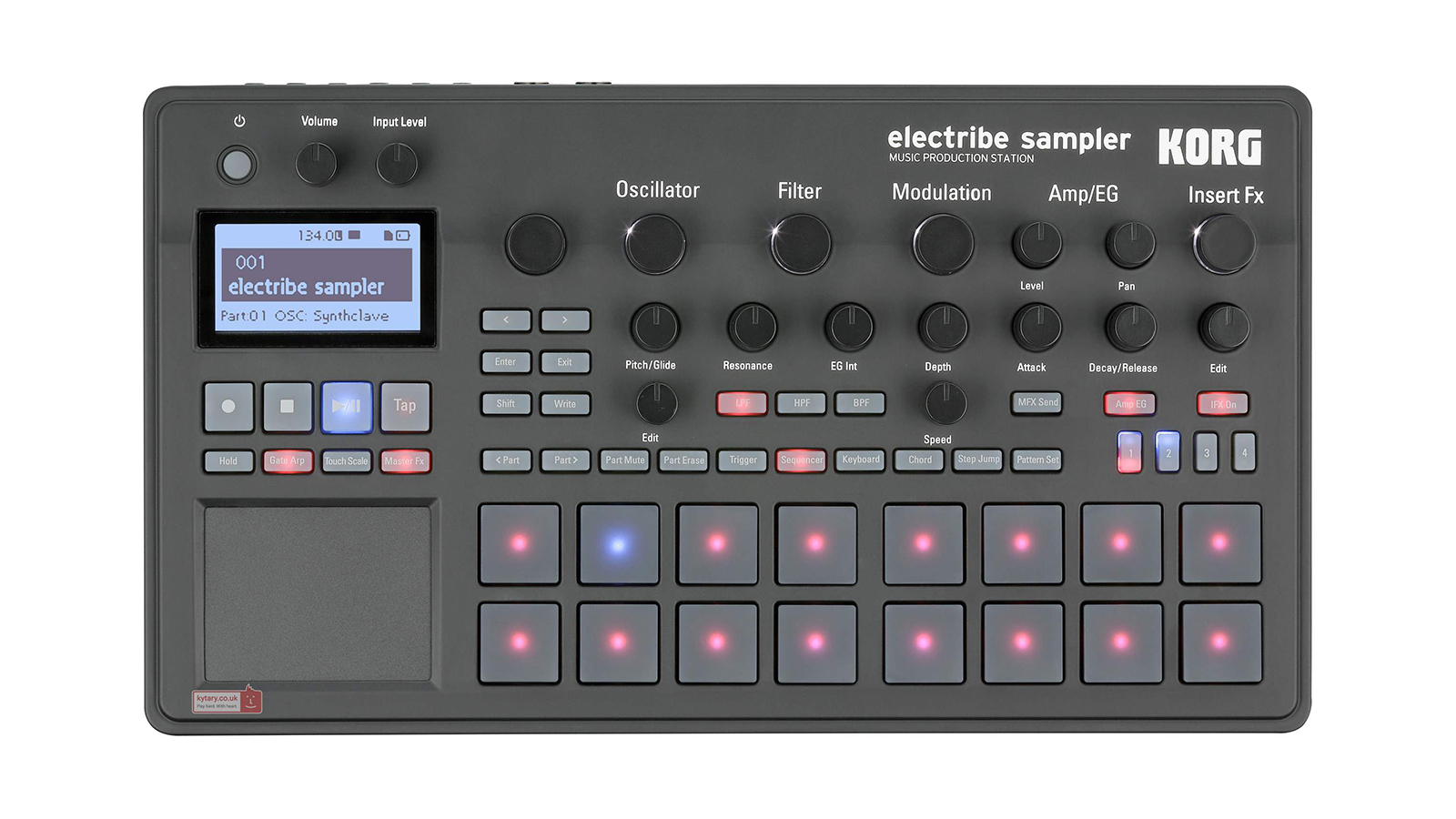
Specifications
Reasons to buy
Reasons to avoid
With Electribe, Korg slips the word sampler into the title, so gives the user the choice of importing or recording their own audio to use as the raw content with which to build their own tracks.
Something we didn't expect was the inclusion of hard-wired content. You get over 400 drums, melodic hits and stabs, FX, phrases and loops - all still labelled Oscillators in the Korg parlance.
It's very easy to get up and running with the Electribe. Each front panel pad (a 'part') can be assigned a sound. Press record and play, and bash the pads to create a pattern. Chord mode maps common chord types to each key, while Sequencer mode turns the pads into an X0X-style step sequencer. Most of the knobs and some of the buttons can be automated using Korg's Motion Sequencing system, something that has found much popularity of late with their cut-price Volca boxes.
Electribe Sampler is a worthy successor to its forebear the ESX-1. The inclusion of ROM-based content and synthesis capabilities is useful, though it's a shame some of the more interesting filter types weren't carried over from the non-sampling version. For those wishing to free themselves from the tyranny of the mouse or streamline their live set-up the Electribe Sampler may well be the answer.
Read the full Korg Electribe Sampler review
Best grooveboxes: Buying advice
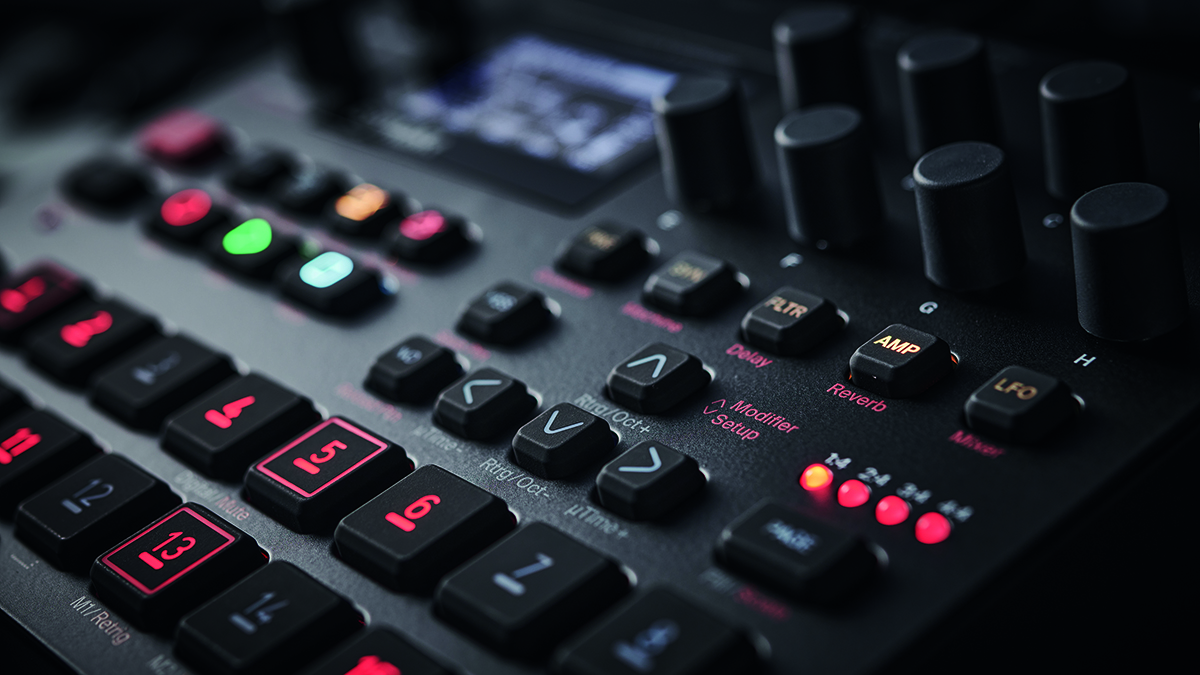
What are grooveboxes?
The very definition of a groovebox is about as liquid as it gets. You can say that anything that makes beats and melodies is making grooves, but that could even include a laptop! So here at MusicRadar we have made our own rules on what makes a great groovebox!
Grooveboxes are more than drum machines because they also produce melodies, but they are not quite the all-singing, all-dancing, serious hardware DAWs that cost you over a grand. These are fun machines that are designed to allow you to get ideas down quickly or inspire new ones. If you are not making beats with accompanying basslines or leads within minutes you aren’t using a good groovebox. Great grooveboxes can also be used standalone; as good as Macs and PCs are, a great groovebox doesn’t need a computer.
So it’s simple, right? Grooveboxes are fun, cost under a grand, create instant beats and melodies, you can take them anywhere, and you don’t need a computer to run them.
Well, all good rules are meant to be broken and even some of our own choices stretch our definitions. Some veer towards hardware DAWs - Polyend’s Tracker and Akai’s MPC One - such is their power. And many (MPC One again) do prosper from being connected to a computer (for power, or to load sounds or export audio).
However, our core concepts and ideas of a groovebox do hold true with most of our inclusions, and your choice of groovebox very much depends on how much you want to follow the rules, too.
So which type of groovebox is right for you?
Your choice of groovebox obviously depends on what you want it for, but this is easy to determine: how close to being a full song producer do you want your box to be?
If you just want to make beats and basses on the move, there’s a good chance that there’s a phone or tablet app that will do the job. But if, like us, you want hands-on tweaking but don’t want to spend a fortune, then our entry level devices - the Roland AIRA Compact T-8 and Korg Vocalists Sample - will get you great grooves for around $/£150.
The rest of the options in this best grooveboxes guide ramp things up in terms of power, aiming themselves eventually at full song-makers. The chances are your computer DAW will do everything for you so you might be after something you can take out and about to get you some of that power on the move. Well, not all of our choices do this - they might be tied to AC mains or, at the very least USB power. As this might be important to you, we’ve included power requirements in our specs so you can see which boxes are truly mobile.
The final point is ease of use. As good as machines like the Elektrons and Polyends are, they often use leftfield thinking in their sequencing that may baffle some users who are more used to desktop DAW operation. That’s when a full hands-on trial or demo might be in order at your local dealer.
Whatever your needs though, there is a groovebox with your name on it, and we think our buyer’s guide covers the full gamut of groovy boxes out there.
Related buyer’s guides
MusicRadar's got your back
- Best laptops for music production: for musicians, producers and DJs
- Best studio headphones for music production and mixing, tested
Get the MusicRadar Newsletter
Want all the hottest music and gear news, reviews, deals, features and more, direct to your inbox? Sign up here.
Andy has been writing about music production and technology for 30 years having started out on Music Technology magazine back in 1992. He has edited the magazines Future Music, Keyboard Review, MusicTech and Computer Music, which he helped launch back in 1998. He owns way too many synthesizers.
“I was like ‘Wow, Coldplay were definitely listening to Radiohead and trying to make their version of it’": Porter Robinson says that he only recently discovered that Coldplay used to sound a bit like Radiohead
Why is tennis superstar Serena Williams being bombarded with microphones fired from confetti cannons? Allow us to explain…
